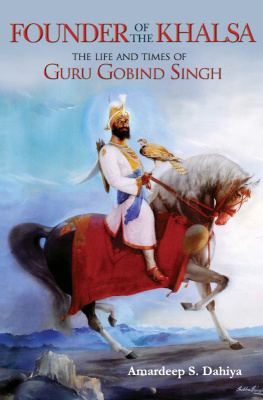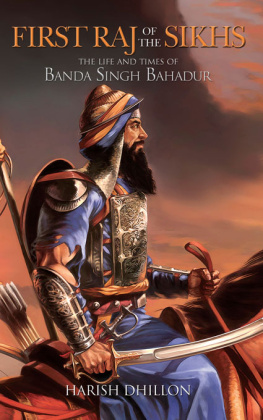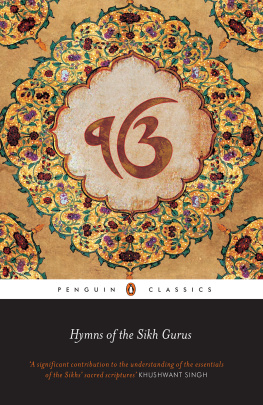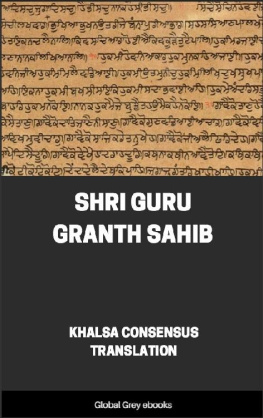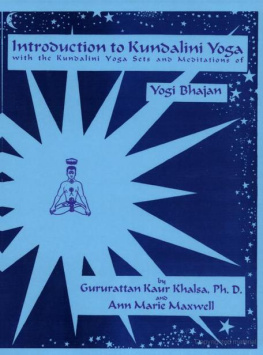Hay House Publishers (India) Pvt. Ltd.
Muskaan Complex, Plot No.3, B-2 Vasant Kunj, New Delhi-110 070, India
Hay House Inc., PO Box 5100, Carlsbad, CA 92018-5100, USA
Hay House UK, Ltd., Astley House, 33 Notting Hill Gate, London W11 3JQ, UK
Hay House Australia Pty Ltd., 18/36 Ralph St., Alexandria NSW 2015, Australia
Hay House SA (Pty) Ltd., PO Box 990, Witkoppen 2068, South Africa
Hay House Publishing, Ltd., 17/F, One Hysan Ave., Causeway Bay, Hong Kong
Raincoast, 9050 Shaughnessy St., Vancouver, BC V6P 6E5, Canada
Email: contact@hayhouse.co.in
www.hayhouse.co.in
Copyright Amardeep S. Dahiya 2014
The moral right of the author has been asserted.
The views and opinions expressed in this book are the authors own and the facts are as reported by him, which have been verified to the extent possible, and the publishers are not in any way liable for the same.
All rights reserved. No part of this book may be reproduced by any mechanical, photographic, or electronic process, or in the form of a phonographic recording; nor may it be stored in a retrieval system, transmitted or otherwise be copied for public or private use other than for fair use as brief quotations embodied in articles and reviews, without prior written permission of the publisher.
ISBN 978-93-81398-53-1
Designed and typeset at
Hay House India
Printed and bound at
Replika Press Pvt. Ltd., Sonipat, Haryana (India)
for isha
The people that surround us contribute to the joy, the happiness and the success that we are blessed with. On them rests the fulcrum of knowledge, karma, success, and failure. As much as Id like to, it is impossible to thank and name all the eminent and marvellously brilliant people that helped bring this book to fruition friends, peers, colleagues some young, some old, some calm, some robust, some cynical. My gratitude and salute to all of them.
My sincere thanks to Dr Harish Dhillon without whose help, knowledge and guidance this book would never have happened.
Most importantly, I would like to thank my publisher, especially the distinguished gentleman whose vision and guidance made it all possible Ashok Chopra of Hay House Publishers, India. A heartfelt thank you to all the creative and assiduous people at Hay House, who worked hard to bring this book to life, especially Tulika Rattan, my editor. I would like to acknowledge my literary steer, the debonair Vivek Ahuja, who convinced me to be a writer and gently nudged me into the literary world.
Lastly, but not in the least, I thank my entire family for their unstinted support and patience.

By the time Guru Nanak died in 1539, he had a sizeable following, mainly in Punjab but also in little pockets along the routes he had taken on his Udasis.
In spite of this, the Sikhs were not regarded as a threat by the Muslim Mughals, and were treated, at best, with a degree of cordiality and, at the worst, with a patronizing tolerance. Emperor Babur had known Guru Nanak personally and found him to be a true man of god. This is why, not only had he ordered his release from imprisonment after the sack of Saidpur, but also deferred to Guru Nanaks wish that all the other citizens be also released. His grandson, Emperor Akbar, made a visit to Guru Amar Das, the third gurus dera, in Goindwal and was so impressed by the Sikh way of life that he wanted to present a gift to the guru. The guru politely but firmly declined this offer on the plea that his needs were more than taken care of by god.
The emperor, not wishing to be thwarted in his generous impulse, made a wedding gift to the gurus daughter, Bibi Bhani, in the form of a jagir of land. It was on this piece of land that the fourth guru, Guru Ram Das, Bibi Bhanis husband, founded the Guru ki Nagri of Amritsar. Ironically, it was also on this piece of land that the fifth guru, Guru Arjan Dev, built the Harmandir Sahib.
When the fifth guru began the work of compiling the Granth Sahib, rumours were spread by the diehard Islamist fanatics and other enemies of the Sikhs, that the new granth contained passages that were inimical and hostile to Islam. These rumours were strong enough for Akbar to take note of them and to have the draft granth examined by his scholars to see if there was any truth to the rumours. The scholars found that not only were there no truth in the rumours, but the granth contained extracts from the works of Muslim saints and scholars.
The main reason for this cordiality and tolerance of the newly emerging faith, as time was to prove, was that the Sikhs had not yet defined themselves in any definite terms and were generally regarded as another fringe reformist movement of Hinduism.
This lack of a definite identity was rectified with the completion of the compilation of the Granth Sahib by Guru Arjan Dev in 1604 and the building of the Harmandir Sahib in the same year another task that was undertaken by Guru Arjan Dev in 1588. The Granth Sahib was installed in the new temple of the Sikhs in 1604. Thus the Sikhs now not only had a religious book of their own, but also a spiritual headquarters of their faith. Their identity had now been clearly and definitely established and there would never again be any doubt that Sikhism was a faith in its own right. The Sikhs were now dimnis, or people of the book, and deserved to be taken seriously.
At last the Mughal rulers awoke to the fact that the new faith was attracting such a strong following, that it might well be a threat to the pre-eminence of Islam in the days to come. The days of the religious liberalism of Akbar were over and done with, and though his immediate successors, put on a faade of religious tolerance, they showed enough signs to indicate the extreme religious intolerance that would be the hallmark of the Mughal rule in the days to come. If any proof of this was needed, it came in the form of the sadistic and totally uncalled for martyrdom of the fifth guru, Guru Arjan Dev in Lahore in 1606.
This tragic event marked the end of the easy, comfortable relationship which had existed between the Sikhs and the Mughal rulers. From now on there would only be hostility and bad blood between the two and even Guru Gobind Singhs support to Prince Muazzam, (later Bahadur Shah) whom he considered to be the rightful heir, in the war of succession after Aurangzebs death, did nothing to improve the situation.
Under Guru Hargobind, the sixth guru, who assumed the mantle of guruship in 1606, the process of transformation of the Sikhs from a non-violent pacifist community to a people who could stand up and protect their beliefs and ideals, had begun.
Guru Hargobind carried two swords, one symbolizing his temporal (miri) powers and the other his spiritual (piri) powers. He understood clearly that times had changed and that if the Sikhs were to protect themselves, it could only be through the use of arms. He trained his followers, not only to be physically strong, but also to be skilled in martial arts. He built up an army, consisting both of the infantry and cavalry. He welcomed gifts of horses and weapons. With the new impetus that he provided to the Sikhs, more and more people flocked to his call. They saw in this call the first real challenge to the cruel and exploitative power of the Mughals, and hence, their first real chance for liberation. Threatened by this growing following, Jahangir, the Mughal emperor, arrested the guru and imprisoned him in the fort of Gwalior. There had already been anger and hate caused by the martyrdom of Guru Arjan Dev, and the wise ones of the court, feared that this arrest would cause this cumulative anger to burst into a violent backlash, which the Mughals would be hard put to contain. They advised the emperor to release the guru, an advice that he was sensible enough to take.
Next page
